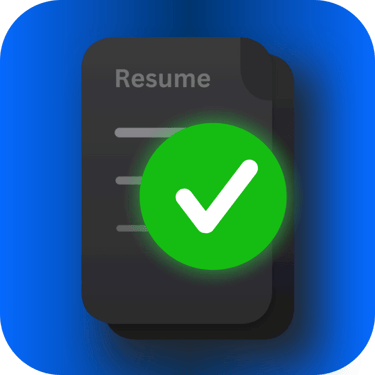What “Tailoring Your Resume” Actually Means
7/27/20253 min read
The most common resume mistake is including irrelevant work experience, identified by 41% of hiring managers.
Imagine you have one single key that you’re told will open any door in your city. You walk up to your dream house, slide the key into the lock, and turn it. It wiggles, it jams, but it doesn’t open. You try another door, and another, with the same result.
Is the key broken? No. It’s just not the right key for that specific lock.
This is the exact problem with using a generic, one-size-fits-all resume. You've created a "master key"—a document you're proud of, full of your skills and accomplishments. But when you send it to dozens of companies, you’re met with silence because you’re trying to open a specific, unique lock with a generic tool.
"Tailoring a resume" is the art and science of cutting a specific key for every door you want to open. It means strategically modifying your resume to perfectly match the requirements of the one job you are applying for right now.
It’s not about lying or making things up. It’s about focus. It’s about shining a spotlight on the parts of your experience that are most valuable to that specific employer.
So, What are you actually changing?
Tailoring isn't about rewriting your entire life story for every application. It’s a targeted process. A well-tailored resume is customized in four key areas:
1. The keywords and phrases:
The first reader of your resume is almost always an Applicant Tracking System (ATS). This software scans for direct matches between the words in your resume and the words in the job description.
Generic resume: Lists your skill as "Team Leadership."
Tailored resume: Notice the job description asks for "Cross-Functional Project Management" and rephrases your skill to match that exact language.
This simple change can be the difference between your resume being seen by a human and being part of the 75% of applications that are automatically rejected by an ATS.
2. The professional summary:
Your summary is your 30-second elevator pitch. It should be a direct answer to the employer's question: "Why should we hire you?"
Generic summary: "A results-oriented marketing professional with 5 years of experience seeking a challenging role."
Tailored summary: "A data-driven marketing manager with 5 years of experience growing B2B SaaS engagement, specializing in the SEO and content strategies mentioned in your job posting."
See the difference? The second one speaks directly to the company's needs.
3. The work experience bullet points:
Your work history is not a list of job duties; it's a portfolio of your greatest hits. When tailoring, you don’t list everything you did. You feature the accomplishments that are most relevant to the new role.
Let's say the job requires experience with increasing customer retention.
Generic bullet point: "Was responsible for sending out a weekly customer newsletter."
Tailored bullet point: "Increased customer retention by 15% in 6 months by launching a targeted weekly newsletter that reduced churn."
By using specific data and focusing on the result, you prove you can solve their problem. A recent survey showed that 63% of recruiters want resumes that are specifically tailored to the open position, making this step crucial.
4. The skills section:
Don't just throw every skill you have into a list. The job description is your cheat sheet.
Generic skills section: Lists 15 skills in no particular order.
Tailored skills section: Pulls the top 5-7 skills mentioned in the job description (like "Salesforce," "Client Onboarding," "Contract Negotiation") and places them prominently at the top of the list.
Tailoring is effective, but exhausting
The good news is that tailoring works. Job seekers who tailor their resumes are significantly more likely to land interviews because they make the recruiter's job easy. They connect the dots and immediately present themselves as the perfect fit.
The bad news? It can be an incredibly time-consuming and tedious process. Reading every job description, identifying keywords, rewriting bullet points, and adjusting your summary for every single application can take hours. This is why so many people give up and fall back on the master key approach, leading to job search burnout.
It’s the single biggest challenge in applying for jobs today: you know you should tailor, but you simply don't have the time.
What if you could tailor perfectly in seconds?
This is the exact problem the TailorMyResume app solves. This app automates the tedious parts of resume tailoring so you can focus on what matters: preparing for the interviews you’re about to land.
With TailorMyResume, the process is effortless:
Start with your resume: Have your core resume ready in the app.
Paste the job description: Find a job you love and simply copy-paste the description into our app.
Get your custom documents: Instantly, AI analyzes the user's specific needs and customizes both your resume and cover letter to be a perfect match.
It’s the power of a perfectly "cut key" for every job application, without spending hours at the workbench. You get an ATS-optimized, recruiter-focused application every single time, giving you a powerful advantage in your job search.
Stop getting your resume rejected for being too generic. Download TailorMyResume from the App Store and start opening more doors.


